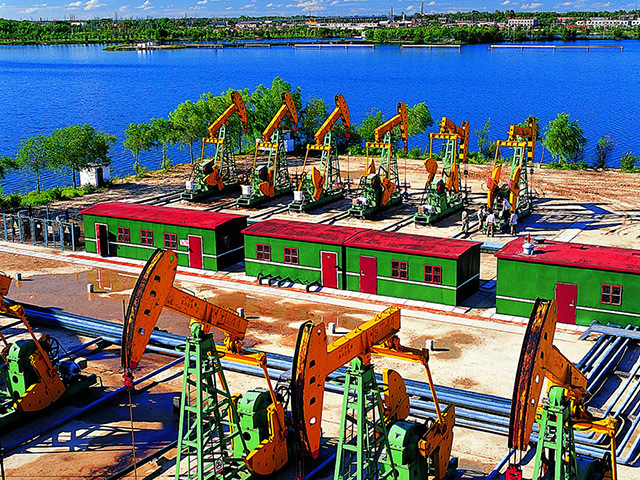
With a population of over 1.3 billion, China is the world’s leading energy consumer, and the vast majority of its electricity comes from domestically mined coal. But the Asian nation is cutting its dependence on fossil fuels and replacing it with renewables at breakneck speed to meet rapidly growing energy demands and address acute air pollution issues.
The country’s laser focus on renewables is turning it into a world leader. China has abundant exploitable wind resources both onshore and offshore due to its large land area and long coastline.
Capitalizing on this, it is currently dominating the global wind energy market, building half the capacity added in 2015 and hosting a third of the cumulative world total.
The market is continuing to look strong. Under its 13th Five Year Plan released earlier this year, China set out plans to increase its wind capacity by 121 percent by 2020.
Drive towards offshore wind
While studies forecast that wind power could provide 26 percent of China’s projected electricity demand by 2030, meeting the government’s ambitious targets over the next five years will not be easy.
To reduce China’s reliance on traditional power sources, more engineers, more skills and more sophisticated approaches to service are needed.
Currently, the majority of China’s wind power contribution comes from onshore wind. However, the nation has a target of building 30 GW in offshore wind by 2020. While China already has 93,000 wind turbines erected in the country, the nation’s expertise and knowledge in the wind space is vast.
However, China’s offshore industry will face some challenges, as the sea bed in China is characteristically soft, causing difficulty with regard to foundation type and installation techniques. Given China’s typhoon zones, ensuring that hard-wearing, durable and corrosion-resistant components are installed is important.
Clearly the challenges of building offshore turbines are much greater than onshore, and so are the maintenance needs. Due to their remote location far out at sea, digital connectivity is needed to allow operators to use predictive analytics to continually monitor and manage system efficiency and viability.
While not commonplace in China today, digital technologies in monitoring and analyzing operation are soon to be deployed in other regions, ready to enhance wind farm performances and boost energy production.
Aging infrastructure
This isn’t the only issue that China is set to face over the coming years. While it is building turbines at a rapid pace, many have been in place for several years, and the older turbines will soon start to see components needing to be upgraded and replaced.
Retrofitting is not a cheap or a quick job.
The vast size and expense of turbines means that many operators will focus on upgrading certain components to meet new requirements, and they’ll be looking to technology experts to ensure the wind turbines are not only fit for purpose now, but stay that way for the next decade to maximize their investments and improve the reliability and longevity of their wind farms.
Understanding this, GE’s Power Conversion business is designing and developing new components, such as its low- and medium-voltage wind converters, using the expertise of the local Chinese engineers.
Thanks to the input of local engineers in the design process, they are not only fit for purpose, but also supported by a strong local service capability.
In addition to this input into component design, having a team of local service engineers immersed in the market enables GE to effectively provide expert and tailored service support to Chinese customers quickly and constantly. Its local warehouse also allows GE to ensure it has spare components ready to go, no matter what time of day or night an issue arises.
GE also has a dedicated training center in Shanghai, providing tailored trainings to customers based on the individual levels of capabilities and needs.
China has—and continues to be—the largest overall market for wind power since 2009. In fact, according to the Global Wind Energy Council, China accounts for one in every three wind turbines installed in the world. With renewables on the rise, collaboration with industry players will be key to providing a depth of additional skills, past experience and expertise to help China maintain its position as world leader and meet its ambitious objectives.
By Haiming Li, China service leader, GE’s Power Conversion business
Recommended for you
